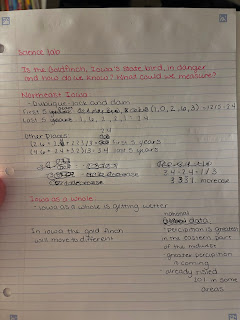Week 14
The big question addressed in the lab, and a description of what you did. Our big question this week in the lab was, how do greenhouse gases work? The greenhouse effect is when gases in the Earth’s atmosphere traps heat from the sun and this is what keeps the planet warm. Without the greenhouse effect, the Earth would be cold. This is the “cycle”: Sunlight comes in and warms the Earth’s surface The earth gives off some of the heat as infrared radiation Greenhouse gases (carbon dioxide) trap some of the heat and stop it from escaping into space This is what keeps the planet warm. We looked at lots of graphs that showed us how much carbon dioxide is in the atmosphere. One of the graphs I found very interesting was the one from West Branch, Iowa. The graph shows data points starting around 2008 and going up to 2022. We see in the graph that carbon dioxide levels get higher and higher every year and then they don’t go low. The data points go up and down in a s...



